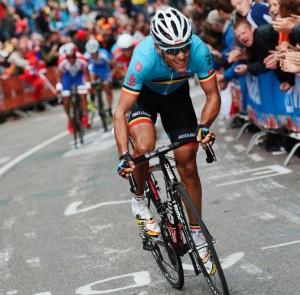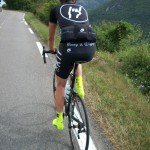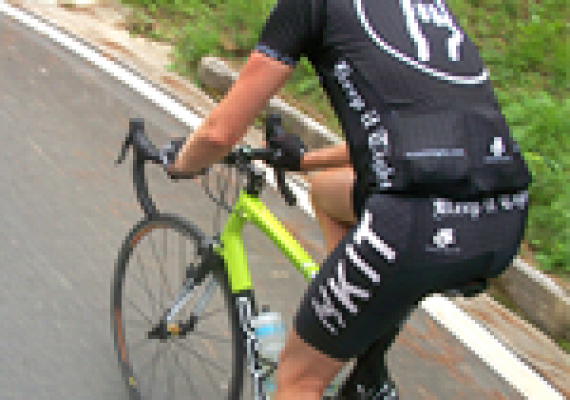By guest KIT blogger, Dave Andersen
“I’m an old rider. I’m too old to change now. I’m not interested in numbers and values. A cyclist is not a Formula 1 driver who gives all numbers of the machine to engineers after testing and then there is a solution.”
— Philippe Gilbert, Road Cycling World Champion
My take on Philippe’s quote is to KEEP IT SIMPLE. While I understand the interest to chart, graph, and quantify every detail of your training, bike racing (or running or triathlon) is not rocket science. I think of it more as an art. I suggest going with the time-tested basics and don’t over think your training! There are a lot of variables that go into training to reach your potential, but for a cyclist or endurance athlete there are three fundamental requirements for success: Aerobic fitness; sport specific fitness; and sport specific skill. Plan your training around these three major areas and you are on your way! I say again, this is simple stuff and it’s nothing new. It’s common sense for those of us that have been doing endurance sports for a long time. Those that came before us figured this out a long time ago. But sometimes it’s good to be reminded. So, here you go!
Aerobic Base
Cycling (or any endurance sport) requires and rewards a big aerobic engine, which in turn (for you techies) should result in a higher functional threshold power. In that sense, it really isn’t rocket science. Whether you are a crit specialist or aiming for a century, the heart of the sport is maximizing your cardiovascular, metabolic, and neuromuscular efficiency. A big base builds better fitness and allows for a longer peak. There really are no shortcuts to fitness. It takes time and consistency, but the results can be quite dramatic! So, go ride (or run) for hours (consistently) and build your base.
Sport Specific Fitness
Once your aerobic engine is as high as you can reasonable get it (typically done in the pre-race season) given your various limitations, it’s time to sharpen your fitness to your specific event. Focus on high-intensity workouts (ie: sprints, intervals, hill repeats) that replicate the efforts required in your event. Ease into it gradually but get to that point where you are suffering just like in a race. If you are a cycling crit racer this will probably be high-speed, high-cadence accelerations. A cycling road racer may focus on hitting the hills. In other words, match your high-intensity work to your goals!

Sport Specific Skill
The final step, and one that can be performed year-round, is technical mastery of your discipline. Triathletes have the added burden of working on their swimming technique. Cyclists must also work on their technique through high-cadence spinning, isolated leg training, corning, or pack-riding. This really cannot be neglected, or else all that fitness you’ve built up is going to be frittered away because of things like not being in the right position in the peloton, or crashing out of a race!
Summary
There are many ways to lay out a training plan, but these three areas are the proven pillars of any training plan. Therefore, while you can fine-tune the details, don’t lose sight of the big picture as you get ready for 2013!
————————
Happy New Year!
Dave
——————-
*Dave Andersen lives in Boston and works in the educational publishing business. He shares his passion for cycling and sport with a wide range of friends and competitors.

Nice, Dave. I see more and more authorities recommending intervals year around. Don’t know exactly what to make of it. But I know my elderly carcass has benefitted from a rest.